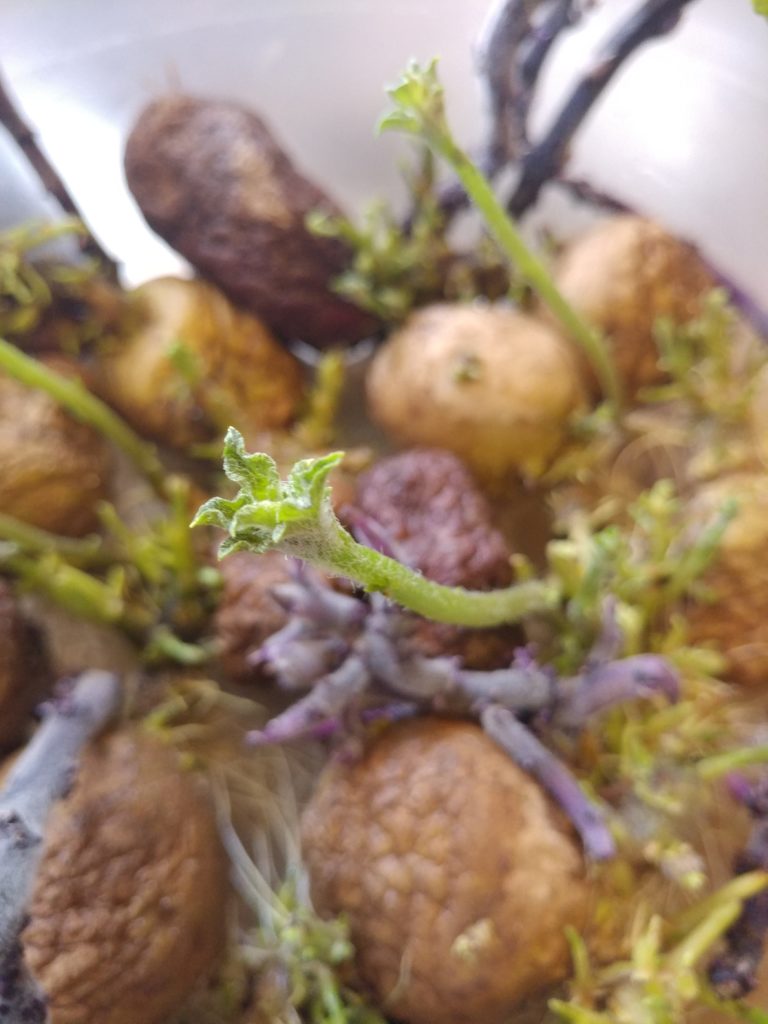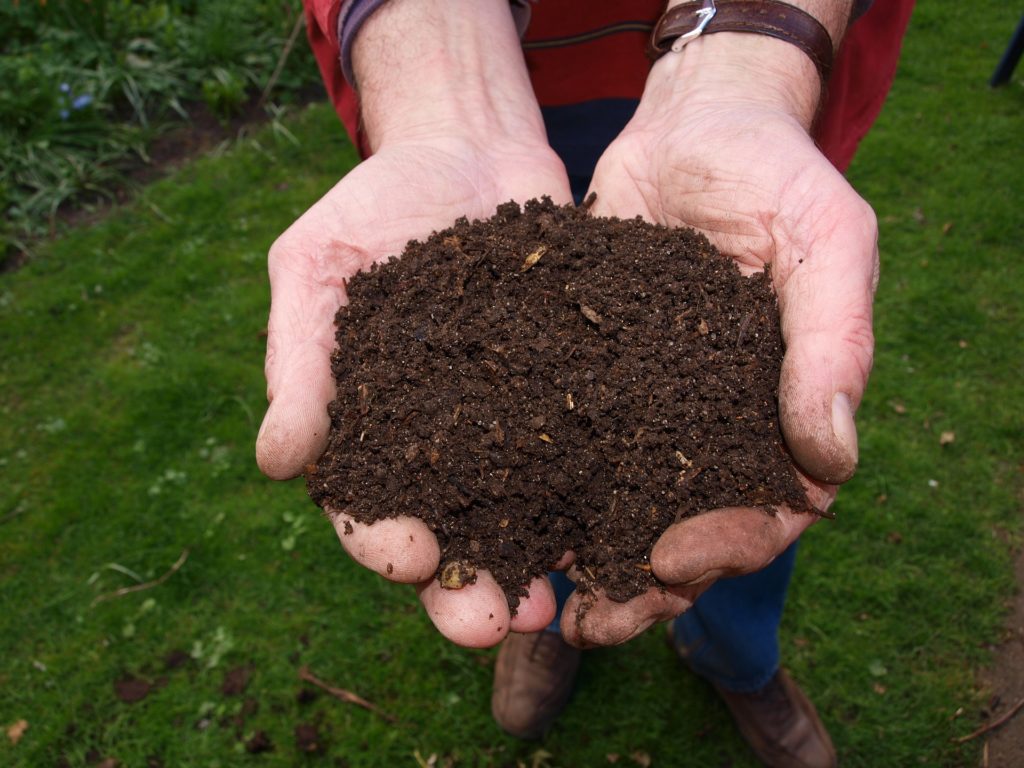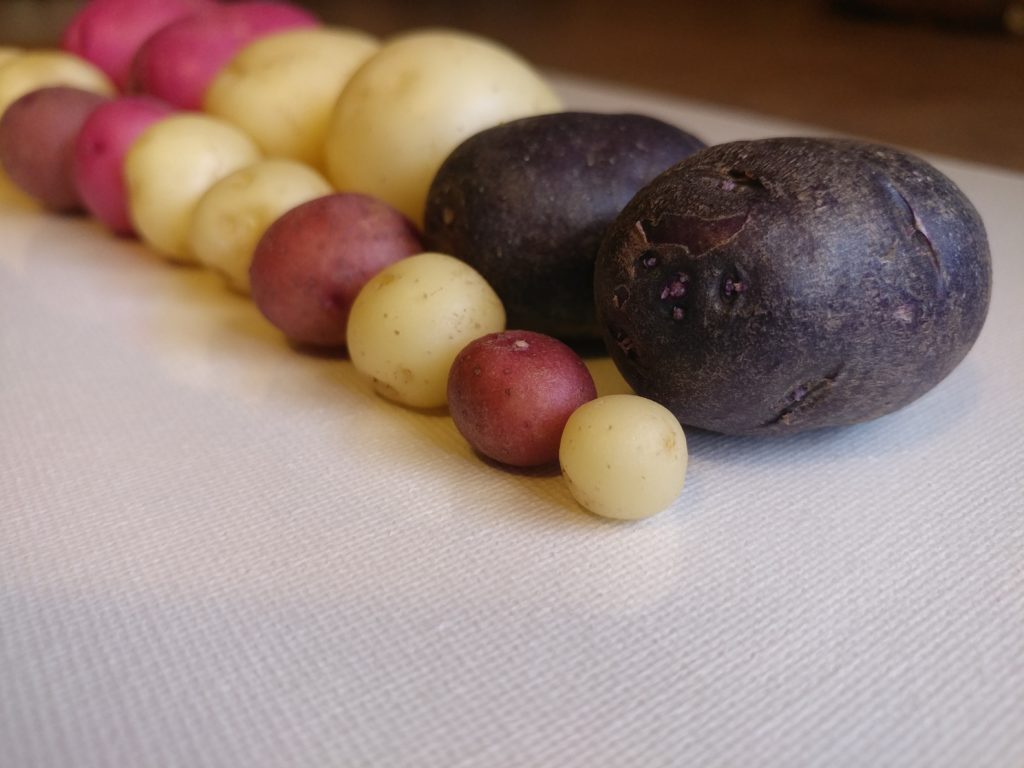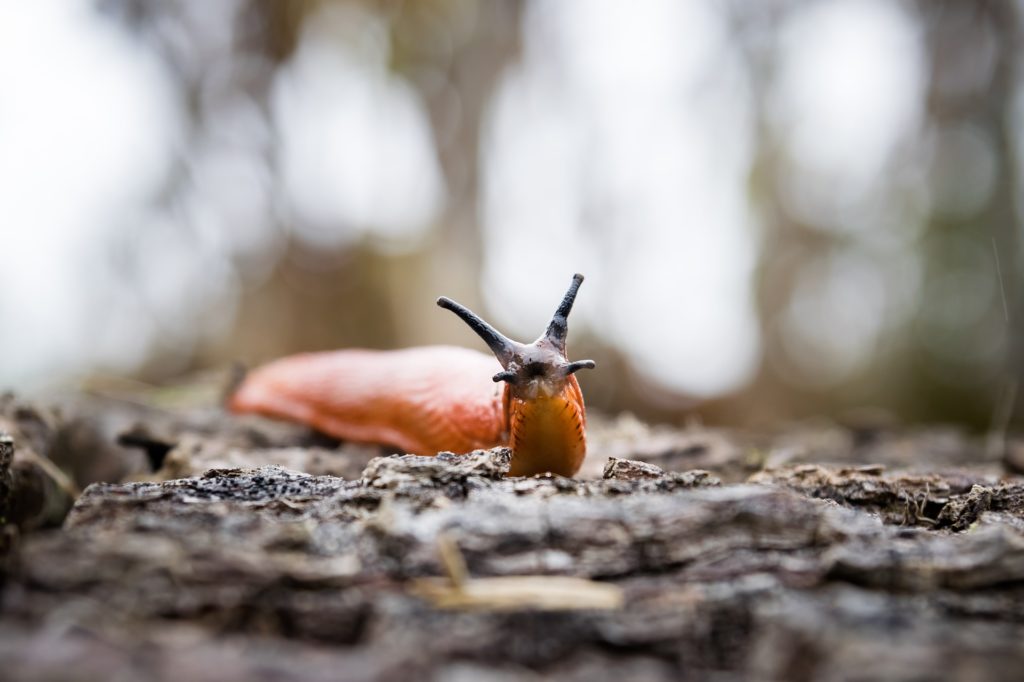During my first year in homesteading, I found myself with an onslaught of potato pests: mostly slugs. Here I sat with my lovely Yukon Gold and Red Norland test pots, watching them finally explode into flourishing young plants. I planted them in 7 gallon fabric pots, which had started to prove to be VERY successful. At first, they were rather slow growing, perhaps an inch every few days- then BOOM!
They seemed to be growing by 2 inches every day!
That is, until I walked outside and noticed that in one pot, 2 of 3 Yukon Gold potato plants were stripped bare of their leaves. There was no evidence of potato beetles, and there was also no evidence of potato blight. It was rather confusing, as the leaves began to brown from the damage. Over the next day or two, the mystery predator continued to kill the Yukon plants off, and eventually brought down the stems of the bare plants. I was left with one, miserable, lonely Red Norland potato plant that was barely hanging on for dear life- with just 3 leaves left.
Then, just as quickly as it came, the pest vanished.
However, it returned during the next set of storms, a result of the relentless summer weather. It finished off my last remaining plant. With this, it clicked: There MUST be slugs attacking my potatoes!
While I was cleaning out the pots of the few tiny potatoes these plants produced in their short lives, I also found a few pill bugs, or “Rollie Pollies” as you may call them, underneath the planters. I never knew these little guys would be harmful as well, but we will save them for another post! I replanted and persevered, adding the gorgeous, show-stopping Purple Majesty potatoes to the mix, as well!

First Line of Defense: Making the Potato Stem Difficult for Slugs to Reach
If a slug finds it nearly impossible to climb up to a potato plant’s stem to get to the tasty leaves, chances are it will seek out food elsewhere. One of the easiest ways to do this is to hill up loose soil around the stem of the plant, steeply. A steep slope means the slug will lose its footing as it tries to climb up the dirt. If the potato slug does make it past all of the other obstacles, perhaps it DESERVES a delicious bite of potato leaf! Just kidding, find and destroy that little slug before it reproduces!

The Next Step of Potato Pest Control: Using Diatomaceous Earth to Kill Slugs
Your second line of defense is with one of the best natural pesticides there is.
After every rain, sprinkle diatomaceous earth liberally right against the plant. You don’t need to spread it far- just create a tiny slug “moat” around the stem of the plant. Diatomaceous earth is simply a fossilized sea creature, known as a diatom, that has been ground up into a fine powder and packaged in a bag. The result is something that appears to be nothing more than a dust that is the consistency of fine flour; but when observed under a microscope, it looks like lots of little glass shards.
These microscopic shards will tear into a slug like thousands of tiny knives, leaving them to dehydrate and die. No chemicals, no dangerous poisons… Just good ole’ nature hard at work!

Outsmarting Slugs with Drunken Slug Traps
Would you believe slugs are just as willing to crack open a cold one?
Beer lures slugs to their ultimate demise! That’s right! By filling a small dish with beer, a few drops of dish detergent, and setting it with a foot or two of your potato plants, you’ll attract slugs away from the plants.
They will be drawn to the beer for a long leisurely sip- but they will fall in, and won’t be able to get out. Make sure that the beer is fresh and that the trap is replenished every few days, as the slugs prefer to sip on fresh beer.
You should begin placing these traps as soon as your potato plants begin to peak from the dirt; otherwise, they’re easy targets!

Extra Precautions: Keeping An Eye Out!
Slugs tend to come out in wet weather (generally at night), and will hunker down and hide during warm dry days.
Look at your plants on a wet night and pick off any slugs that you see in order to spare your potatoes. Try feeding them to your chickens, if you have any!
During the day time or dry weather, try looking under things that are dark and moist. This might be planters on the ground, under tarps or bags of soil, under yard equipment, under the deck, under straw in a garden bed, or around your garden hose hookup. The more slugs you eliminate, the fewer there are to reproduce and make your problem worse.
